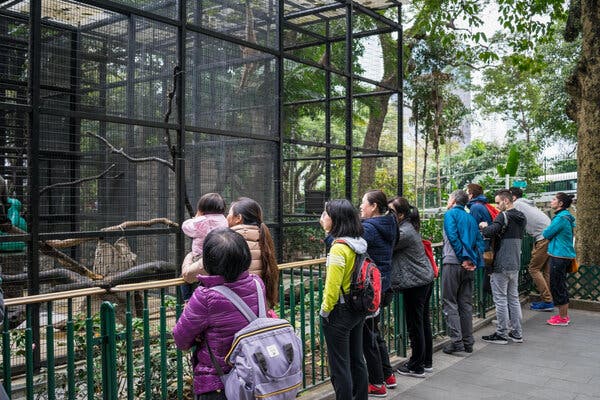The zoo partially closed after the deaths, which occurred over two days and included members of a critically endangered species.

The deaths of nine monkeys at a Hong Kong zoo over two days has prompted officials to close part of the zoo as they investigate.
Eight of the monkeys were found dead on Sunday at the Hong Kong Zoological and Botanical Gardens, Hong Kong’s Leisure and Cultural Services Department, which manages the zoo, said in a statement. Another died on Monday. Three of the dead monkeys were of a critically endangered species, officials said.
John Lee, Hong Kong’s leader, said that toxicology tests and autopsies were being carried out to find a cause of death. “We have to first contain the problem, to stop it from spreading,” he said at a weekly news conference on Tuesday.
“This is an unusual cluster of deaths in captive animals,” said Siddharth Sridhar, a clinical assistant professor at the University of Hong Kong’s department of microbiology.
An investigation would likely focus on whether an infection or some kind of toxic agent was to blame, Professor Sridhar speculated.
The zoo is Hong Kong’s oldest, having opened in 1871, and covers about 14 acres in the city’s affluent Mid-Levels district.
The zoo began to monitor all its animals on Sunday and closed its mammals section for cleaning and disinfection on Monday. The government also convened an urgent interdepartmental meeting to determine how to address the situation, Hong Kong’s tourism bureau said.
On Sunday, park staff noticed that two more monkeys had unusual movements and appetite, the tourism bureau said on Monday night. They were removed from their enclosures, and one died on Monday morning, while the other is still under observation, the bureau said.
The dead animals included three cotton-top tamarins, which are listed as critically endangered by the International Union for Conservation of Nature. The others were four white-faced sakis, one De Brazza’s monkey and one common squirrel monkey. The monkey under observation is also a De Brazza’s monkey.
The facility is home to 158 birds, 93 mammals and 21 reptiles.
Tiffany May is a reporter based in Hong Kong, covering the politics, business and culture of the city and the broader region. More about Tiffany May
Yan Zhuang is a Times reporter in Seoul who covers breaking news. More about Yan Zhuang



